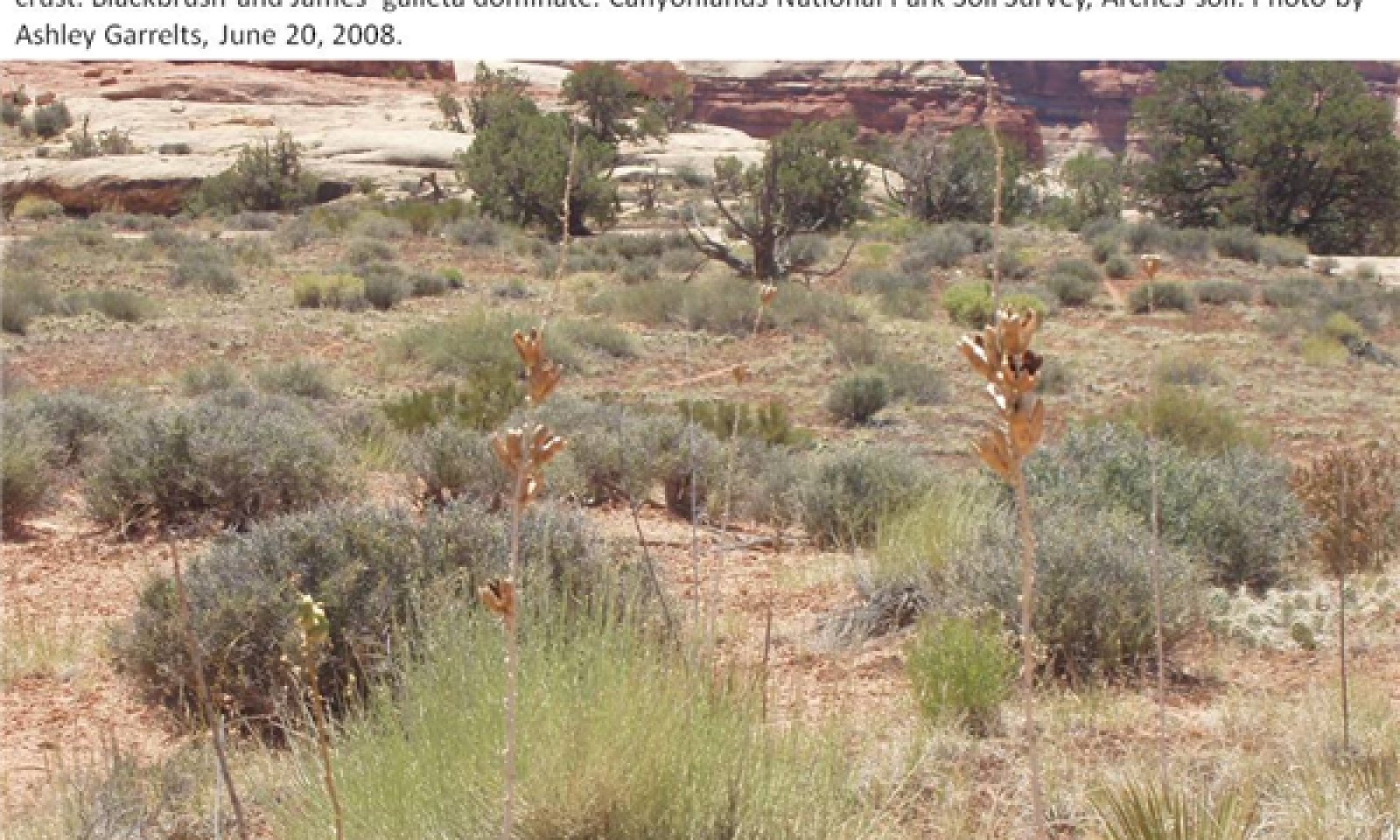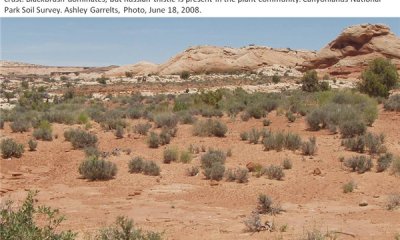
Semidesert Shallow Sand (Blackbrush)
Scenario model
Current ecosystem state
Select a state
Management practices/drivers
Select a transition or restoration pathway
- Transition T1 More details
-
No transition or restoration pathway between the selected states has been described
Target ecosystem state
Select a state
Description
The reference state represents the plant communities and ecological dynamics of the desert shallow sand (blackbrush) ecological site. This state includes the biotic communities that become established on the ecological site if all successional sequences are completed under the natural disturbance regimes. The reference state is generally dominated by blackbrush, however depending on disturbance history, native grasses, forbs, or other shrubs may also be abundant in the plant community. Prolonged drought may result in a temporary loss of perennial grasses from the referenc state.
Submodel
Description
The invaded state is similar to the reference state in plant community structure and function, however invasive species are now present in all community phases. As a result, the resistance and resillience of the site to further degradation are reduced. This state is generally dominated by blackbrush, with diverse shrubs and perennial grasses also abundant. Primary disturbance mechanisms include weather fluctuations, native herbivore grazing, domestic livestock grazing, recreation,and surface disturbances such as road and pipeline development. Due to lack of disturbed areas, the community responses to such disturbances are not well documented.
Submodel
Mechanism
This transition occurs when a seed source and germination sites are available for non-native plant establishment. Common invaders of this site are Russian thistle, cheatgrass and red brome. Recreation, grazing, or other soil surface disturbances may facilitate this transition, but these species are capable of establishing on this site without major disturbances.
Model keys
Briefcase
Add ecological sites and Major Land Resource Areas to your briefcase by clicking on the briefcase (![]() ) icon wherever it occurs. Drag and drop items to reorder. Cookies are used to store briefcase items between browsing sessions. Because of this, the number of items that can be added to your briefcase is limited, and briefcase items added on one device and browser cannot be accessed from another device or browser. Users who do not wish to place cookies on their devices should not use the briefcase tool. Briefcase cookies serve no other purpose than described here and are deleted whenever browsing history is cleared.
) icon wherever it occurs. Drag and drop items to reorder. Cookies are used to store briefcase items between browsing sessions. Because of this, the number of items that can be added to your briefcase is limited, and briefcase items added on one device and browser cannot be accessed from another device or browser. Users who do not wish to place cookies on their devices should not use the briefcase tool. Briefcase cookies serve no other purpose than described here and are deleted whenever browsing history is cleared.
Ecological sites
Major Land Resource Areas
The Ecosystem Dynamics Interpretive Tool is an information system framework developed by the USDA-ARS Jornada Experimental Range, USDA Natural Resources Conservation Service, and New Mexico State University.




